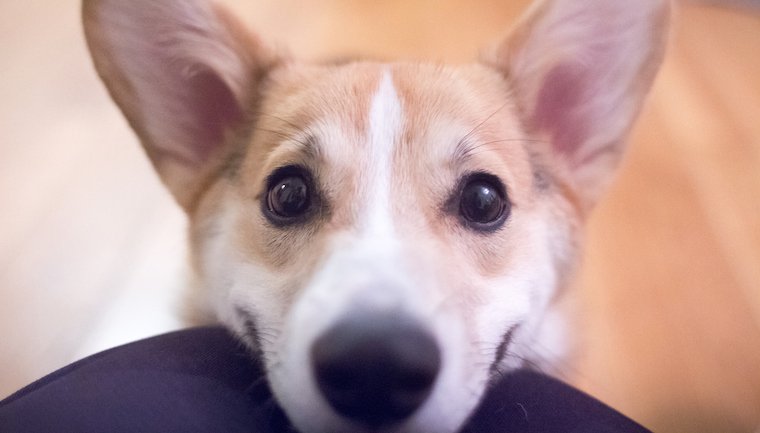- August 22, 2022
- No Comment
- 3 minutes read
Ancient Humans Bred Dogs for Adorable Puppy Eyes – DogTime

(Photo Credit: Paul Park/Getty)
Those sweet puppy eyes are no accident. According to a recent study, certain features help explain how dogs display such a range of facial expressions. Furthermore, the study states that early humans played a role in this process by selectively breeding dogs for these traits.
“Dogs are unique from other mammals in their reciprocated bond with humans which can be demonstrated through mutual gaze,” says Anne Burrows, PhD, the study’s senior author. Anne is a professor of physical therapy at Rangos School of Health Sciences at Duquesne University in Pittsburgh.
Advertisement
The study focused on the anatomy of dogs’ and wolves’ faces. According to the team, small muscles, also called mimetic muscles, are responsible for our pups’ ability to communicate with facial expressions.
In the study, the team compared the facial anatomy of domesticated dogs against wolves. Like humans, both dogs and wolves contain mainly fast-twitch muscles in their facial structures. However, the study reveals that wolves contain a higher percentage of slow-twitch muscles relative to dogs.
Fast-twitch muscles are good for short, strong bursts of power. This allows for a greater range of facial mobility and helps dogs with short bursts of noise, such as when barking.
Slow twitch muscles, on the other hand, are suited for long, sustained power. Wolves use these muscles for situations like howling.
In addition, domesticated dogs have an additional muscle not seen in wolves that contributes to that special “puppy dog” expression.
The team behind the study believes their results can shine a light on how early humans bred dogs thousands of years ago.
Dr. Burrows says, “our preliminary findings provide a deeper understanding of the role facial expressions play in dog-human interactions and communication.”
The researchers also stated that more research is needed to confirm their findings and to continue to find the anatomical differences between wolves and domesticated dogs.
Regardless, all dog parents know those puppy eyes say more than words can sometimes.

